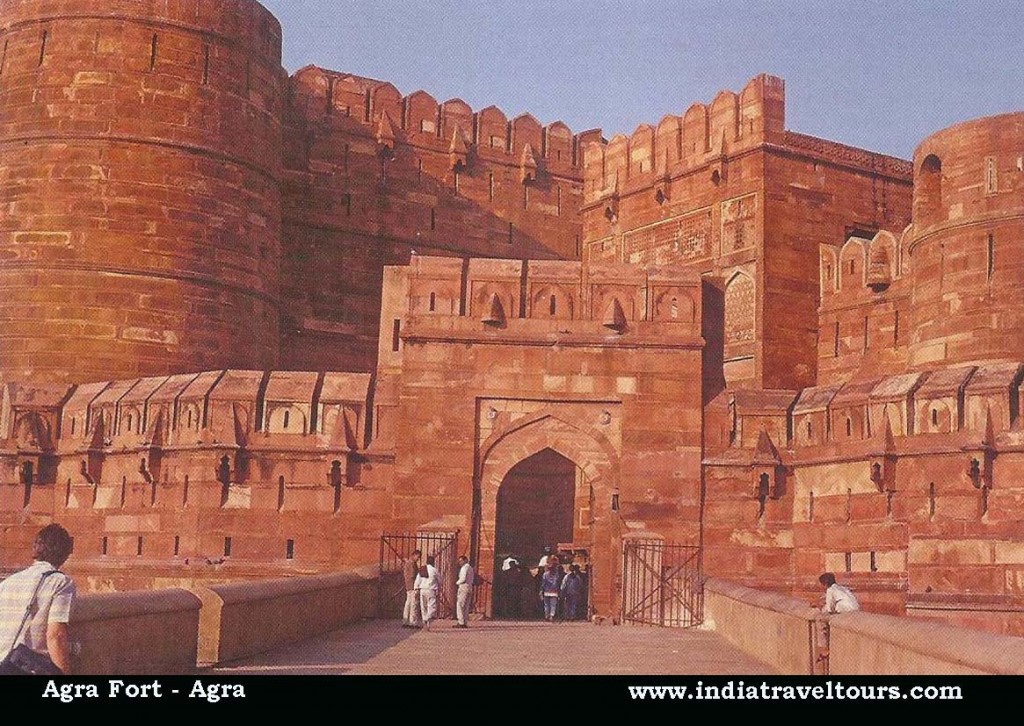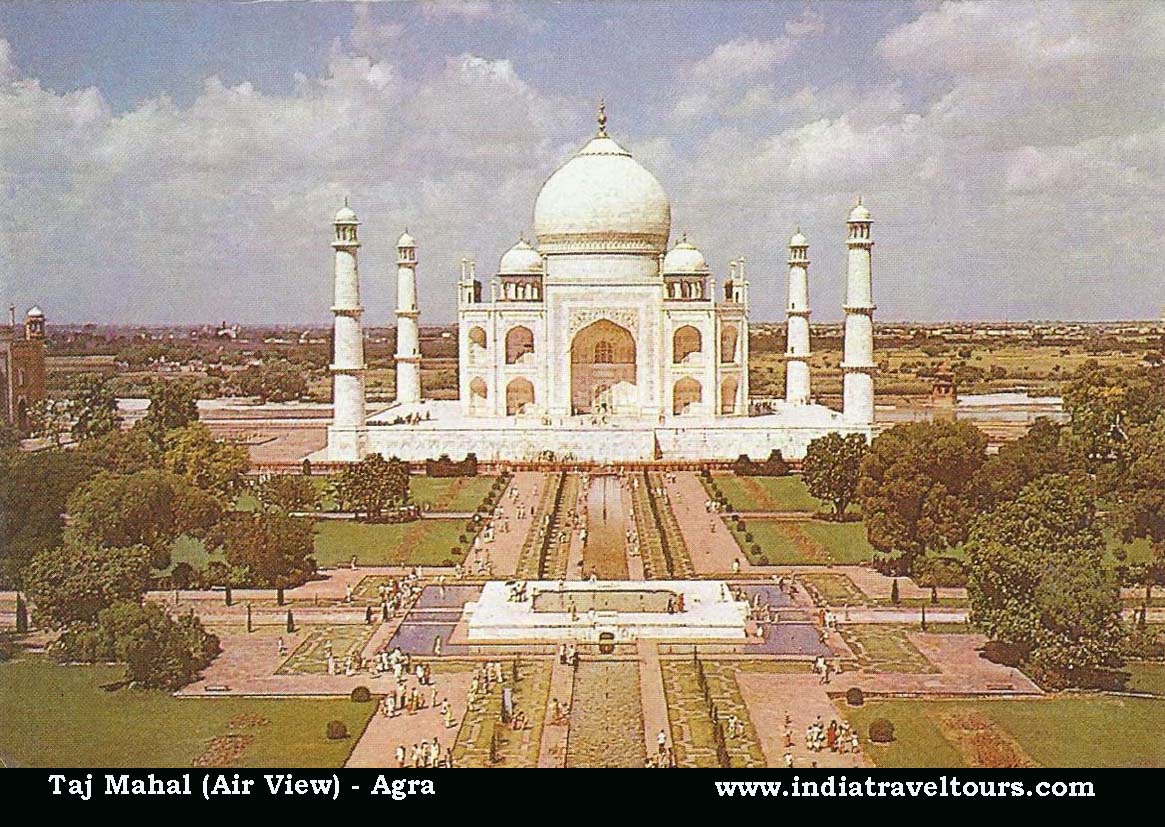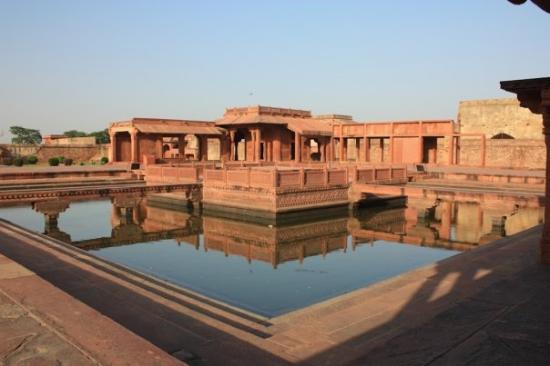Tourists Attractions in Agra – Taj Mahal, Agra Fort, Fatehpur Sikri
According to an ancient legend, the Brij Mandal, encompassing the modern day Agra and Mathura region, had twelve major orchard-forests and one of them was named as Agra-Kunj, i.e. the foremost orchard. The local folklore is replete with references of Lord Krishna once playing pranks in his childhood in these orchards and groves.
The local milieu changed with the passage of time and Mughal Emperor, Akbar chose the same spot to establish his capital at Agra. With the establishment of the Mughal Court, the city gradually evolved as the seat of imperial power. Today, Agra is renowned the world over for the aesthetic grandeur of the Taj Mahal and other major tourist attractions. So much so, apart from New Delhi as the national capital of the country, Agra is the most visited tourist spot in India. Besides being the hot tourist destination, Agra has also emerged as one of the leading export centres for various handicraft articles, as well as an important educational and commercial location.
The grandeur of Mughal Empire has been preserved for posterity in the majestic monuments left behind by various rulers of that dynasty, which continues to compel succeeding generations to visit Agra at least once to relish the visual treat.
Agra’s several places of interest may conveniently be visited in the following travel sequence. A minimum of two days are required for the complete Agra sightseeing
Major Tourists Attractions in Agra
Agra Fort
A massive structure on the banks of River Yamuna designed and built by Emperor Akbar in 1565 AD. It has numerous palaces and a beautiful pearl mosque. Distance 5 kms from Agra Cantt Railway station.
Taj Mahal
A monument dedicated in love, as a memoriam to his queen Mumtaz Mahal, this ‘sonnet in stone’ was built by Mughal Emperor Shahjahan. It was completed in 1653 AD. Distance 5 kms from Agra Cantt Railway station.
Itmad-ud-Daulah’s Tomb
An impressive tomb built by Empress Nurjahan between 1622 and 1628 AD in memory of her father Ghias-ud-din Beg. Nurjahan’s mother is also buried here. This exquisite marble structure was a forerunner of the Taj. Distance 9.2 kms from station.
Sri Radhasoami Marble Temple
A beautiful temple in marble is under construction on the Samadhi of the founder of the sect at Soamibagh. The HQ of Radhasoami Satsang, the Soamibagh (meaning the Garden of the Supreme Lord) was laid out by Soamiji Maharaj, the revered founder. The construction reposes his holy relics in this temple, being constructed elaborately in white, pink, green, yellow and in other variegated mosaic coloured marble stone. Various fruits and flowers like the lotus, the plantain, the papaya, the Ashoka, the grapevine, and host of other flowers are depicted into stone in natural form. All components of the construction are being blended artistically, so as to produce a harmonious impact, which appeals to the heart and to the eyes of the beholder. The construction emphasizes the catholicity of Radhasoami faith, which embraces people of different nationalities. Distance 10 kms.
Fatehpur Sikri
Also known as the Deserted City, Fatehpur Sikri was built by Emperor Akbar in 1569 AD. It was however abandoned soon after its construction in view of acute paucity of water. This former capital of Mughal Empire though still retains its magnificence. Distance 42 kms from Agra Cantt Railway Station.
Ram Bagh
The earliest example of Mughal garden. It was laid out by Emperor Babar in 1526 AD. Distance 11 kms from station.
Sikandra (Akbar’s Mausoleum)
Construction was initiated by Emperor Akbar, though it was completed after Akbar’s death in 1613 AD, by his successor and son Jahangir. The Akbar’s tomb at Sikandra is a rich blend of Hindu and Muslim styles of art and architecture which characterized the era, like the Emperor himself. Distance 13 kms from Agra Cantt railway Station.
Excursions
Apart from these major attractions at or near Agra, there are a number of other tourist attractions which can be taken up as an excursion, if time permits. These are the Keetham Lake (23 kms), Keoladeo Ghana National Park at Bharatpur, Rajasthan (54 kms), the ancient Hindu Temple city of Mathura, being the birthplace of Lord Krishna (54 kms), Vrindavan, the childhood playground of Krishna (63 kms), and Van Vihar Wildlife Sanctuary at Dholpur in Rajasthan (56 kms).


